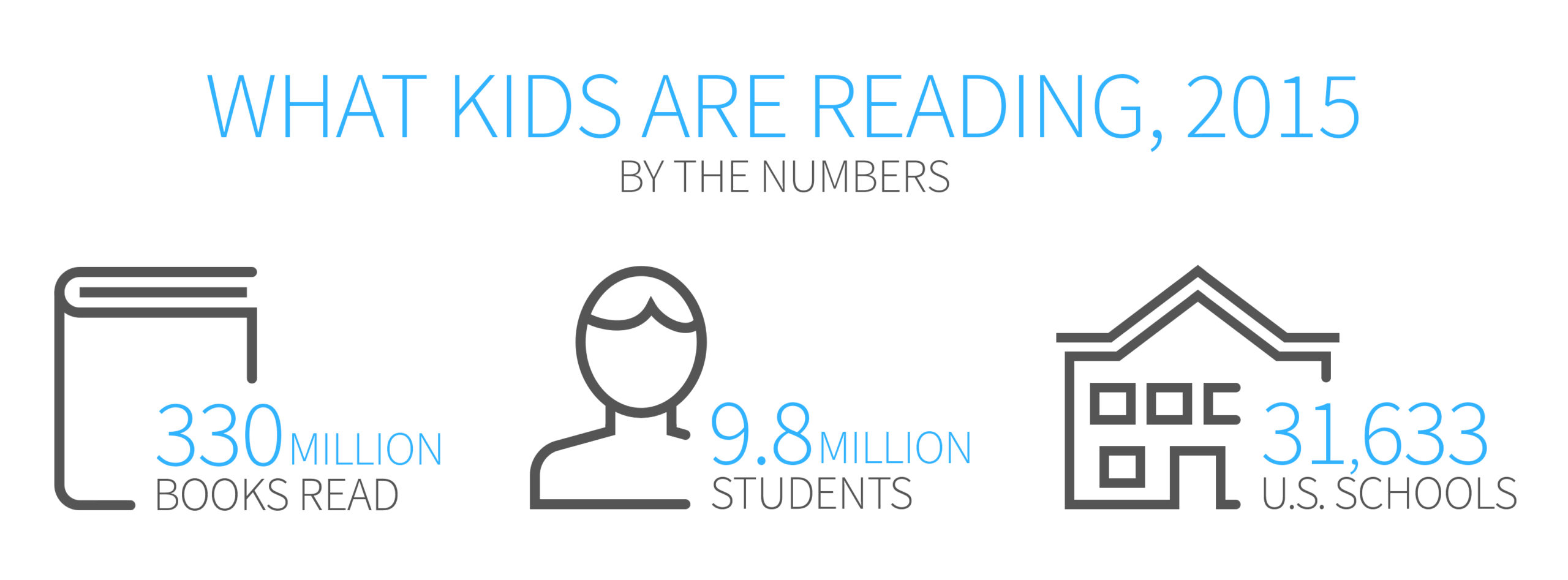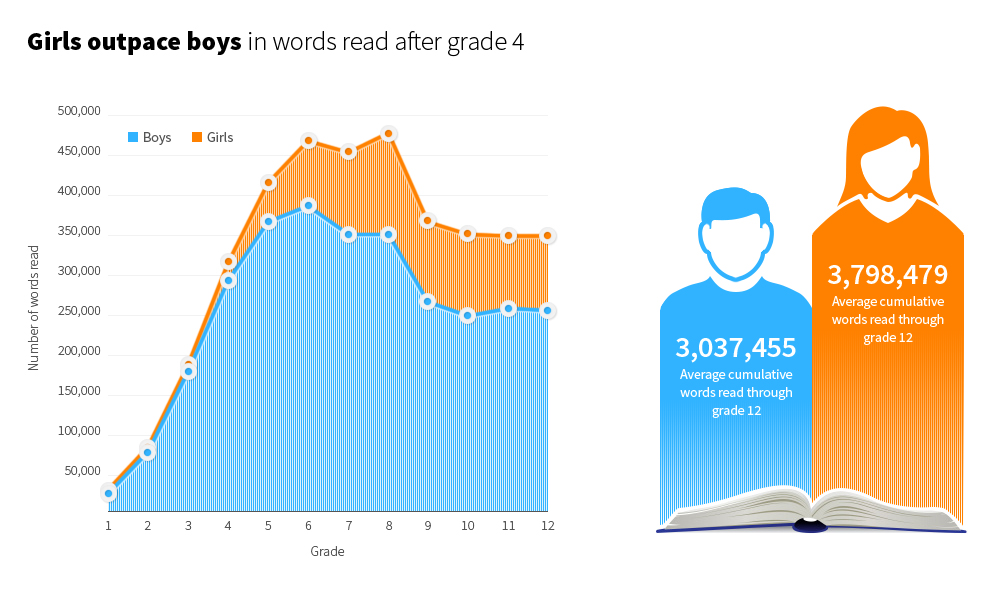November 17, 2014
Everyone—big or small, young or old—enjoys a great story. When you give a book, you give not merely words on a page but freedom, independence, adventure, intrigue, joy, introspection. You name it. But where can you find potential gift-giving literary candidates? The nearest bookstore display, sure. A best sellers list is also a fine choice.
But how about a source based on data? So much data. More than 9.8 million kids in all grades and 330 million books read. Data from kids, both beginning and seasoned readers, who have actually read the books. Truly read them from beginning to end—cover to cover.
That’s what you’ll find in the 2015 edition of What Kids Are Reading: And Why It Matters. Each year, our annual report delivers bona fide lists of the popular books kids are reading by grade and gender. The lists are informative, interesting, and perhaps a helpful guide to navigating a sea of holiday gift-giving options.
Since it was first released in 2008, What Kids Are Reading has drawn on data from Accelerated Reader software, but there is far more to be found in the AR database. And there is far more to this year’s report.
This year we looked at our AR data and thought let’s do more. Let’s share more. Let’s dive in and answer questions about why it matters exactly how and what kids are reading—how much time they spend reading, whether they understand what they’ve read, which texts they are delving into. In this period of transition, with new standards asking us to ready our students for college and career, it’s time to take stock of where we are with reform efforts and where we need to go.
To that end, each section of the 2015 report begins with in-depth analyses and insights about key aspects of student reading practice, specifically:
- Reading practice. It goes without saying that reading is critically important for students’ success in school and beyond, but how much, how long, and how well must they read? What key combination of factors produces conditions where reading evolves from being a good idea to yielding concrete gains in student achievement?
- Nonfiction reading. College- and career-readiness standards call for students to read a wide variety of materials, especially nonfiction and informational texts—in other words, those materials read most frequently by adults in college and career. How do US students measure up right now as the standards are being rolled out? How much further do we have to go?
- Reading challenge. The new standards also emphasize that students read increasingly complex materials as they progress through school. Let’s check in on the status of student exposure to complex texts. Are students reading books at the levels of rigor suggested? And even more importantly, are they understanding these books?
As the basis of this report—and in classrooms across the country each day—Accelerated Reader has provided insights into independent reading practice for educators, parents, and kids. In this new era, where more is being asked of those educators and parents and kids, we want to do more. Because reading matters.
Just this month we launched Renaissance Accelerated Reader to provide insights about the other side of the coin: instructional reading. Stay tuned, as future iterations of What Kids Are Reading will offer additional information into nonfiction reading and instructional skills practice captured from AR 360 to provide a more complete picture of what students like, know, and can do.
Until then, we invite you to explore an added dimension to What Kids Are Reading. Go beyond the report and visit What Kids Are Reading, a site dedicated to providing data-driven insights about student learning—to create popular-book inspiration lists customized to your specifications. Create list upon list broken down by grade, gender, fiction, nonfiction, state, reading level—whatever you like. And when you’re there, be sure to dive into the report itself to dig into the analyses and find out why reading matters to guest essayists Rodman Philbrick, Phyllis Reynolds Naylor, Dr. Christine King Farris, and Andrew Clements.
So, go explore. Because a book is the one gift that keeps giving, that truly can be appreciated by any and all. Though small in stature, a book’s contents are weighty. It can be shared, passed on, used again and again. No matter the reader, there is always a story that fits.
Learn more
What Kids Are Reading is the world’s largest annual study of K–12 student reading habits.



